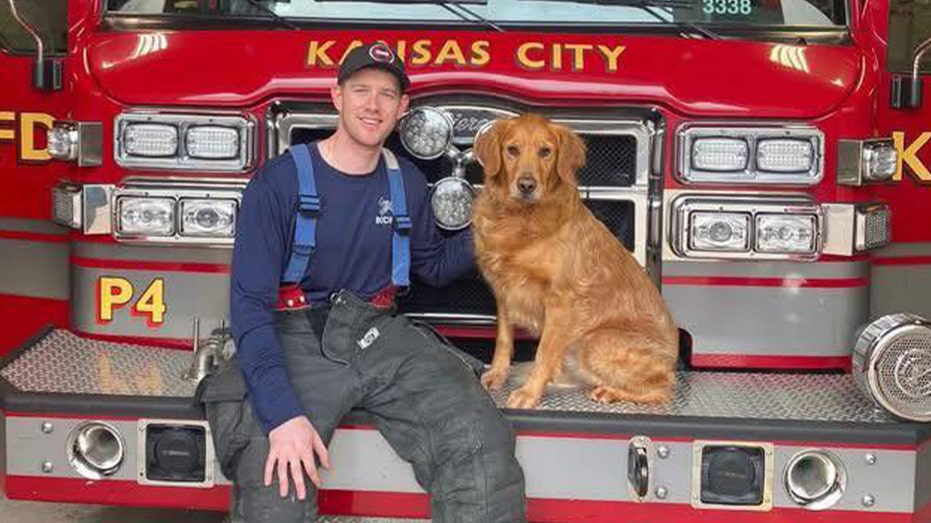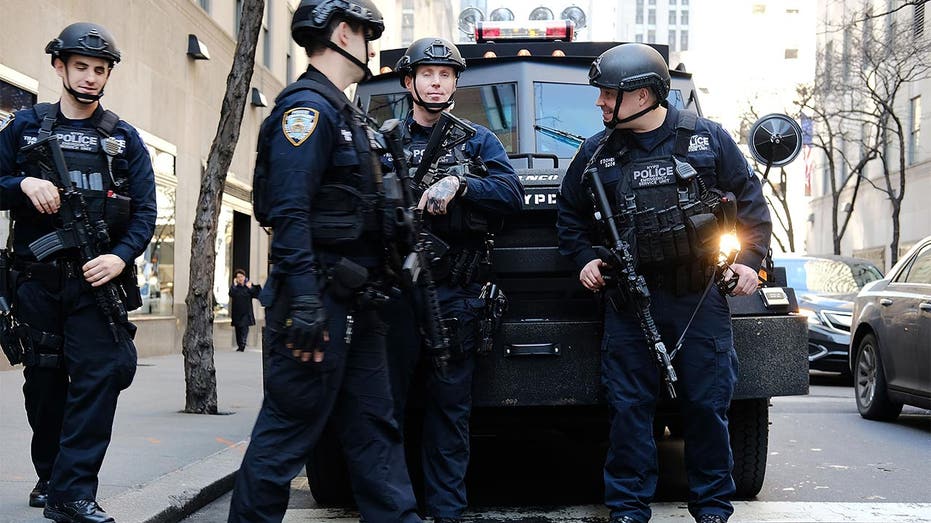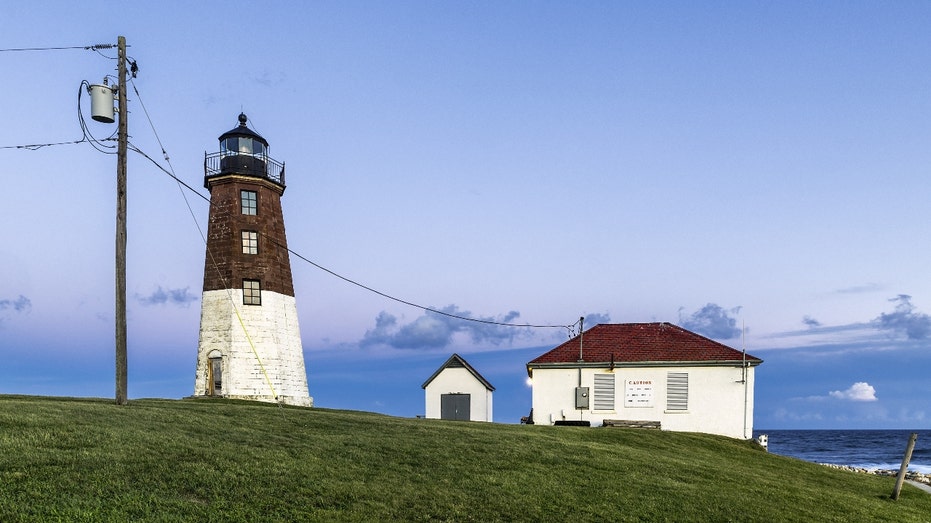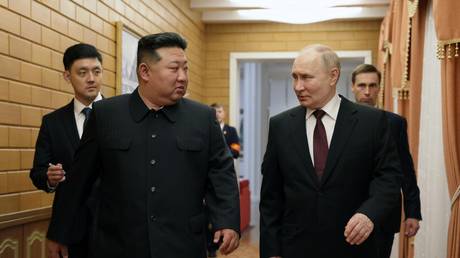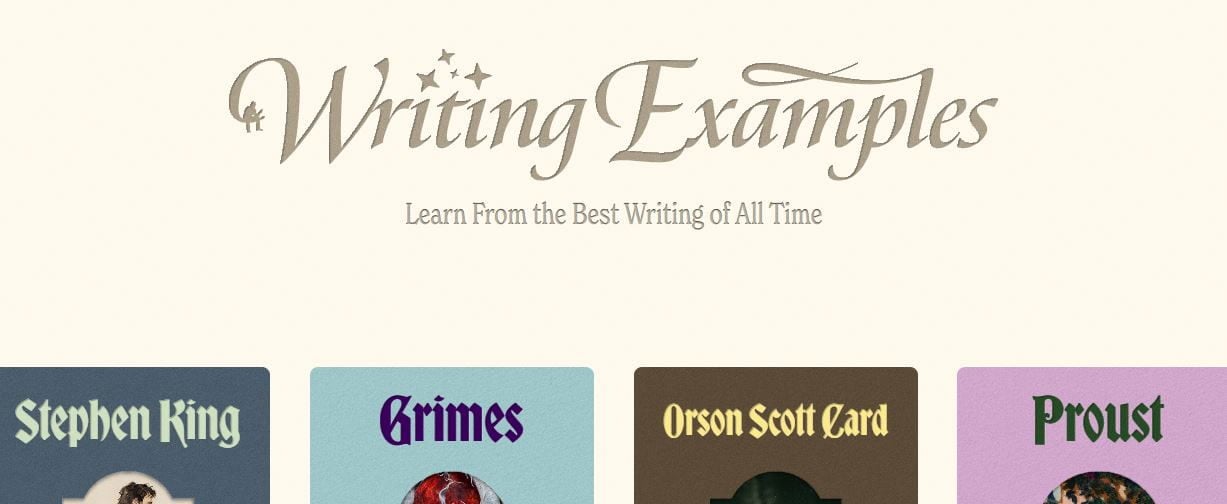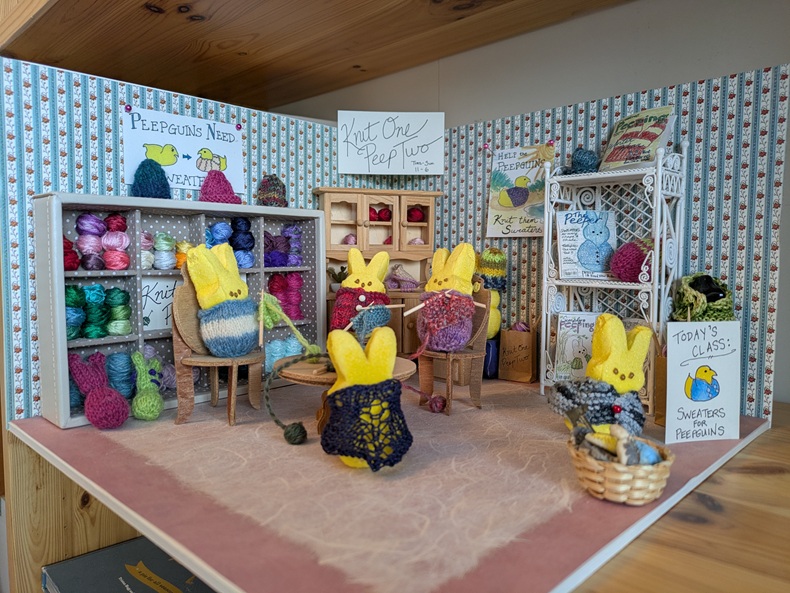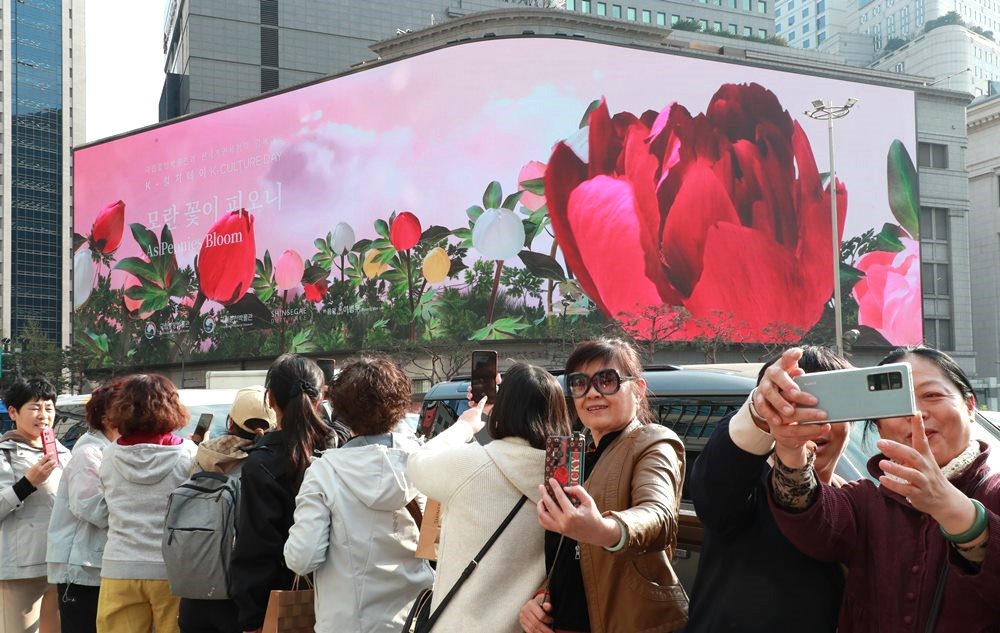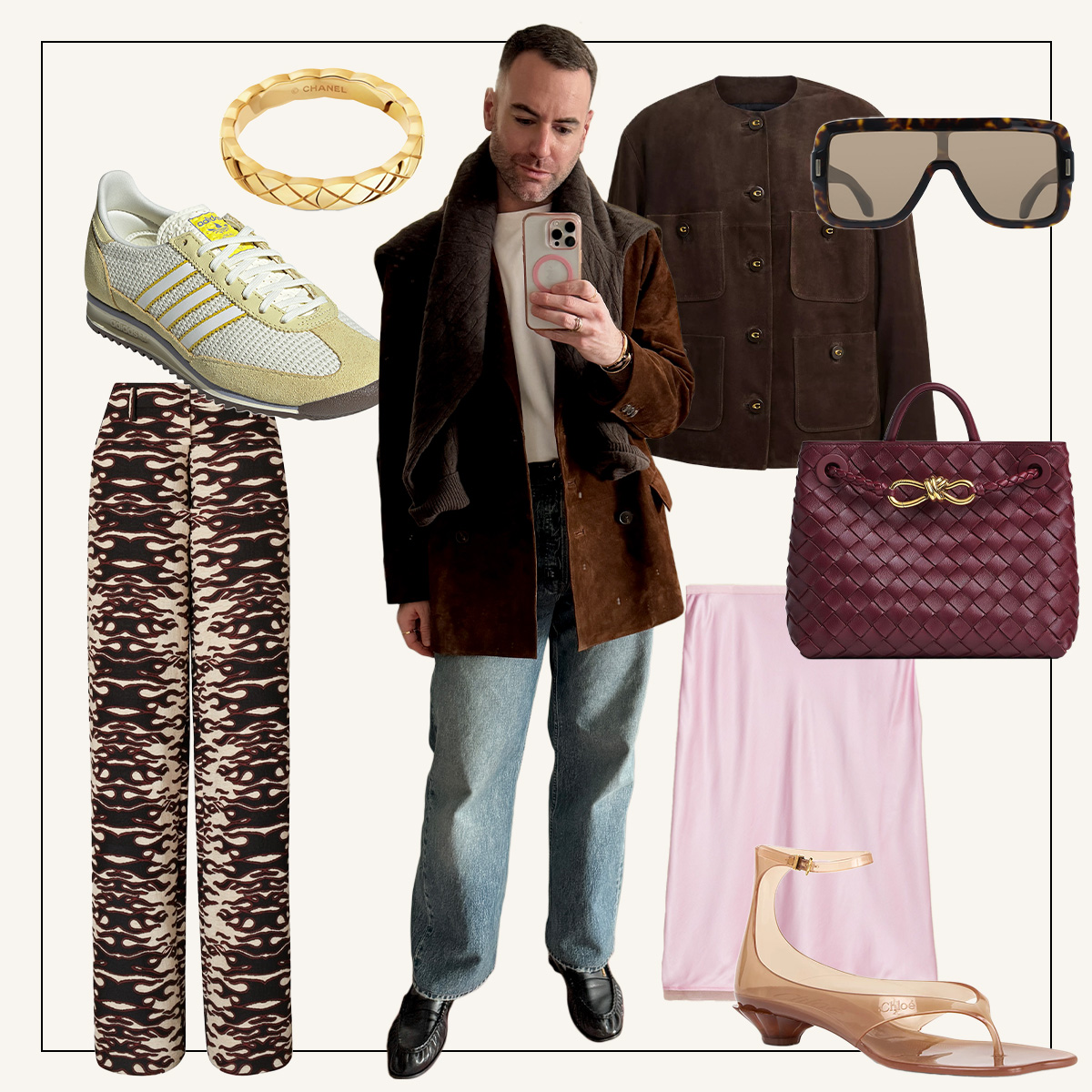Jerry Schatzberg Looks You in the Eyes
Self-Portrait (Jerry Schatzberg, 1964).“Maybe I should have a fall at the end of every film now!”I’m calling to check in with Jerry Schatzberg, who is fresh out of the hospital. Two days earlier, at the opening night of a Museum of Modern Art retrospective of his film career, he had shown his feature debut, Puzzle of a Downfall Child (1970), released when he was 43 years old. As he climbed the short flight of stairs to the stage for a Q&A, Schatzberg, now 97, lost his balance and tumbled backward. The whole room screamed. Ushers, museum staff, and his assistants came instantly to his side. He did not move. After five silent minutes, everyone was asked to leave. When he was carted out of the MoMA on a stretcher and loaded into an ambulance, the crowd that had lingered outside the theater cheered. He waved softly back. Over the phone, Jerry assures me he’s doing fine, beyond some bruises and a stiffness in the neck.A week later, I call again to report on the large audiences that had been attending his movies. He responds, in true dad-joke form: “Well, they checked me from toe to top, and it looks like I still have a brain. So that’s good. I’ll keep training for my acrobat career in my next Q&A!” That dark, Bronx-bred humor keeps Jerry spry, grounded, eternal.“Life and art,” the late French critic Michel Ciment once said, “they’re totally connected in Schatzberg.”1 Schatzberg was, with Irving Penn, Bert Stern, and Richard Avedon, among the top US fashion photographers of the 1960s. He was among the hippest of Manhattan’s jet set, at the eye of the storm that was the Warhol-’n’-Happenings era. He was close friends with Bob Dylan, the Rolling Stones, Jimi Hendrix, Roman Polanski, and Sharon Tate, and he took some of their finest, most relaxed photographs. In 1968, at the age of 41, he sold off his studio and set about reinventing himself as a seminal New Hollywood director of the 1970s.Ciment called Schatzberg’s first three films—Puzzle of a Downfall Child, The Panic in Needle Park (1971), and Scarecrow (1973, which shared the Palme d’Or with Alan Bridges’s The Hireling at Cannes that year)—“the most astonishing first features, three in a row, of any American director’s work.” Schatzberg’s sense for young talent and new artistic directions hipped him to Al Pacino, Morgan Freeman, and Meryl Streep, whom he gave their breakout roles. Under his direction, Gene Hackman, Faye Dunaway, Kitty Winn, Stockard Channing, Willie Nelson, and Christopher Reeve achieved their strongest performances. He cultivated what Nora Ephron, writing in 1965 of his photographic subjects, called “rapport.”2And the rapport he has with his subjects, cast, and crew is key to his relaxed genius (a descriptor that he rejects). His photographs humble their iconic figures, gently pulling them down from the pedestal of fleeting celebrity; his films, too, marvel in the tripwire instability of everyday life’s tragicomic dimension, provoking audiences to laugh and cry in the same breath. But so far, the recognition that has been lavished upon other members of his generation—Penn and Avedon in photography, Martin Scorsese and Robert Altman in cinema—has eluded Jerry Schatzberg, who Ciment claimed was “constantly ignored by the American intellectual elite.”Fidel Castro Speaking on the Radio (Jerry Schatzberg, 1959).Schatzberg has the aura of a real-life Zelig. Practically the entire history of the United States in the back half of the twentieth century can be traced through his life’s work: from the Beatles to the Stones, Dylan to Aretha, Miles Davis to Willie Nelson, Fidel Castro (“I was with him in January 1959, a week after he’d entered La Habana and the revolution had succeeded, and it was like hanging out at the corner cigar store.”) to Ted Kennedy (“I photographed him riding, and he was in a good mood that day because he’d just decided to run for Senate. … We talked about horses!”).He was born in a Manhattan hospital in 1927, the year of the first Academy Awards. He spent his childhood in the Bronx, off Grand Concourse, in the days before Robert Moses’s catastrophic Cross Bronx Expressway. He and his father would go to the movies every Friday evening; “I guess my hero was Mickey Rooney—he was everybody’s hero in those days,” Schatzberg recalls. His neighborhood cinema was the grand Loew’s Paradise, though he mostly frequented the more modest Devon Theatre, where he reckons he must have unknowingly crossed paths with Stanley Kubrick, another Bronxite with a future in photography and film.Schatzberg was expected to take over his father’s part of the family fur business. “But I hated it,” he says. He would escape work by taking two-hour lunch breaks, gazing into the windows of Willoughby’s and other photography shops around the Fur District. One day, Schatzberg answered an ad in the New York Times by a photographer looking for an assistant. The photographer, trying to get rid of this greenhorn, sent him to his agent. The agent sent him to Lillian Ba


Self-Portrait (Jerry Schatzberg, 1964).
“Maybe I should have a fall at the end of every film now!”
I’m calling to check in with Jerry Schatzberg, who is fresh out of the hospital. Two days earlier, at the opening night of a Museum of Modern Art retrospective of his film career, he had shown his feature debut, Puzzle of a Downfall Child (1970), released when he was 43 years old. As he climbed the short flight of stairs to the stage for a Q&A, Schatzberg, now 97, lost his balance and tumbled backward. The whole room screamed. Ushers, museum staff, and his assistants came instantly to his side. He did not move. After five silent minutes, everyone was asked to leave. When he was carted out of the MoMA on a stretcher and loaded into an ambulance, the crowd that had lingered outside the theater cheered. He waved softly back. Over the phone, Jerry assures me he’s doing fine, beyond some bruises and a stiffness in the neck.
A week later, I call again to report on the large audiences that had been attending his movies. He responds, in true dad-joke form: “Well, they checked me from toe to top, and it looks like I still have a brain. So that’s good. I’ll keep training for my acrobat career in my next Q&A!” That dark, Bronx-bred humor keeps Jerry spry, grounded, eternal.
“Life and art,” the late French critic Michel Ciment once said, “they’re totally connected in Schatzberg.”1 Schatzberg was, with Irving Penn, Bert Stern, and Richard Avedon, among the top US fashion photographers of the 1960s. He was among the hippest of Manhattan’s jet set, at the eye of the storm that was the Warhol-’n’-Happenings era. He was close friends with Bob Dylan, the Rolling Stones, Jimi Hendrix, Roman Polanski, and Sharon Tate, and he took some of their finest, most relaxed photographs. In 1968, at the age of 41, he sold off his studio and set about reinventing himself as a seminal New Hollywood director of the 1970s.Ciment called Schatzberg’s first three films—Puzzle of a Downfall Child, The Panic in Needle Park (1971), and Scarecrow (1973, which shared the Palme d’Or with Alan Bridges’s The Hireling at Cannes that year)—“the most astonishing first features, three in a row, of any American director’s work.” Schatzberg’s sense for young talent and new artistic directions hipped him to Al Pacino, Morgan Freeman, and Meryl Streep, whom he gave their breakout roles. Under his direction, Gene Hackman, Faye Dunaway, Kitty Winn, Stockard Channing, Willie Nelson, and Christopher Reeve achieved their strongest performances. He cultivated what Nora Ephron, writing in 1965 of his photographic subjects, called “rapport.”2And the rapport he has with his subjects, cast, and crew is key to his relaxed genius (a descriptor that he rejects). His photographs humble their iconic figures, gently pulling them down from the pedestal of fleeting celebrity; his films, too, marvel in the tripwire instability of everyday life’s tragicomic dimension, provoking audiences to laugh and cry in the same breath. But so far, the recognition that has been lavished upon other members of his generation—Penn and Avedon in photography, Martin Scorsese and Robert Altman in cinema—has eluded Jerry Schatzberg, who Ciment claimed was “constantly ignored by the American intellectual elite.”

Fidel Castro Speaking on the Radio (Jerry Schatzberg, 1959).
Schatzberg has the aura of a real-life Zelig. Practically the entire history of the United States in the back half of the twentieth century can be traced through his life’s work: from the Beatles to the Stones, Dylan to Aretha, Miles Davis to Willie Nelson, Fidel Castro (“I was with him in January 1959, a week after he’d entered La Habana and the revolution had succeeded, and it was like hanging out at the corner cigar store.”) to Ted Kennedy (“I photographed him riding, and he was in a good mood that day because he’d just decided to run for Senate. … We talked about horses!”).
He was born in a Manhattan hospital in 1927, the year of the first Academy Awards. He spent his childhood in the Bronx, off Grand Concourse, in the days before Robert Moses’s catastrophic Cross Bronx Expressway. He and his father would go to the movies every Friday evening; “I guess my hero was Mickey Rooney—he was everybody’s hero in those days,” Schatzberg recalls. His neighborhood cinema was the grand Loew’s Paradise, though he mostly frequented the more modest Devon Theatre, where he reckons he must have unknowingly crossed paths with Stanley Kubrick, another Bronxite with a future in photography and film.
Schatzberg was expected to take over his father’s part of the family fur business. “But I hated it,” he says. He would escape work by taking two-hour lunch breaks, gazing into the windows of Willoughby’s and other photography shops around the Fur District. One day, Schatzberg answered an ad in the New York Times by a photographer looking for an assistant. The photographer, trying to get rid of this greenhorn, sent him to his agent. The agent sent him to Lillian Bassman, whose husband, Paul Himmel, was looking for an assistant.
“How much does this pay?” Schatzberg asked.
“Twenty-five dollars,” Bassman replied.
“Well, that doesn’t sound bad, twenty-five dollars a day.”
“No, kid. A week.”
“A week?!”
Schatzberg had to think of his wife, Corinne, and their two sons, Don and Steven. He rejected Bassman’s offer and was later given a job by his uncle, who managed a diaper rental business. A promotion promised customers a free picture of their baby. “Who takes the photographs?” Schatzberg asked. “You, now, I guess,” came the response. Each sitting—conducted at the clients’ homes—paid two dollars, and if Schatzberg was lucky and fast, he could earn up to twenty dollars per day, seven days a week. He came up with little tricks: “If you fold a baby’s arms while they’re on their stomach, they don’t have the strength to undo the arms. You can trap the kid there, take the shot, and get out before they start to cry. But even crying, they make a good picture.”

Studio Self-Portrait (Jerry Schatzberg, 1966).
Schatzberg turned eighteen a few months before the conclusion of the Second World War. He enrolled in the Bauhaus-influenced Design Laboratory, an evening course on photography run by Alexey Brodovitch, who would become the art director of Harper’s Bazaar in the 1950s. Brodovitch’s constant demand of his students—including, at various times, such luminaries as Diane Arbus, Richard Avedon, Garry Winogrand, Lillian Bassman, and Robert Frank—was to “Astonish me!” Later, when Schatzberg opened his own studio, he would sometimes walk along the East River all night, under the spell of insomnia. By the time his assistants arrived at 8 a.m. with the day’s coffee and danishes, Schatzberg would have dozens of “Astonish me!” ideas. (He is currently at work on a photography book organized around this principle.)
Schatzberg’s aspirations for photography and the art of cinema expanded under the mentorship of Bill Helburn, who employed him for three years in the early 1950s. While working under Helburn’s tutelage, he became close friends with Helburn’s other darkroom assistant, a young Black man named Jack Shannon. “I learned everything there was to know about film from him,” Schatzberg remembers. “It was through Jack that I found out Mickey Rooney was a hoax. He took me to the 42nd Street cinemas and showed me all the great foreign movies that were coming into the country but were only playing there: Kurosawa, French movies, Italian movies, Satyajit Ray.”
When Schatzberg announced he was leaving the fur business, his father exploded: “What?! Why? Why are you going to leave? Jerry, you are an idiot. You aren’t going to make it.” Though, of course, he did “make it,” Schatzberg says that he has never forgotten this invective from nearly 80 years ago.

Vogue studio lighting, New York (Jerry Schatzberg, 1958).
The rise of Jerry Schatzberg properly began in 1957, when he left his position with Bill Helburn, not without a few pleas and tears, to start his own studio. He began by shooting photos for the portfolios of aspiring models. It seemed that every young woman who came to New York City with a dream wound up in front of Schatzberg’s camera. He built his own lighting system: four banks of four by eight feet, 40 fluorescent bulbs in all, with reflectors on each, which did not require the artificial diffusion of light that was common practice at Helburn’s studio and elsewhere. Schatzberg would shoot directly into the lights, producing a sharp white background with a soft halo around the model. Alex Liberman, Vogue’s art director, got wind of Schatzberg and hired him, even financing the construction of a special set of lights in Paris. Anthony Quinn, Aretha Franklin, Barbara Harris, Frank Zappa, Mama Cass, Chico Hamilton were among those to pose in front of “Les lumières Schatzberg.”
Schatzberg was not only among the elite fashion photographers in the United States; he was the center of ’60s Manhattan’s now legendary party scene. Ephron wrote in 1965 that Schatzberg “leads the kind of life twelve-year-old boys think commercial and fashion photographers lead” in “a combination Hugh Hefner Seduction Fantasy Den and Parisian flat rive droite,” and that “everything that is happening is happening to Jerry Schatzberg.” He was quoted as saying that he considered himself “first of all a commercial photographer, not an artist.” (“How pretentious of me!” says Schatzberg in 2025.) Schatzberg went to discothèques, partied, and observed all that was happening on the scene so that the photographs he took the next day would possess the flair of the times. In Tom Wolfe’s “Girl of the Year,” from The Kandy-Kolored Tangerine-Flaked Dreamline Baby (1966), Schatzberg is with the “teen-agers, bohos, and camp culturati,” the culture-makers who have “won” New York arts and society, since “they do create styles.”
Schatzberg was highly sought after in the 1960s because his pictures had that Something Else, straddling the line between the normal and the bizarre, the composed and the accidental. Strategically deployed blurs suggest the cinematic restlessness of modern life amid sharp, casually political observations on the hodgepodge of the city. A woman standing three feet tall stops on the sidewalk to observe the jewels and dresses of a Christian Dior window. In The Chase (1964), a wheelchair-bound model and her male sidekick are chased through a park by two caped and fedora’d villains—like a scene from Blow-Up and Modesty Blaise (both 1966) as dreamt by Boris from Rocky and Bullwinkle.
In another picture, Peggy Moffitt runs through the park, led by a chicken on a leash. She wears a black dress, hat, and veil, designed by Rudi Gernreich. The Chicken (1964) is one of Schatzberg’s favorite photographs among the thousands he has shot, the one he returns to when asked to describe his sensibility. Schatzberg never only sells ideas of Glamour and Beauty. He prefers to luxuriate in instability where it creeps into the frame. He complicates systems of signs—high art, fashion, Bronx/Jewish humor—by suggesting alternatives to modernity as we expect to see it framed: Why should we have the same old portrait, the same old movie plot? The silly, the animal, levity is as involved in the business of life as the serious, the human, gravity. Schatzberg always seeks to invert expectations. His work remains fresh and porous, sticking in the mind long after less exciting representations of clothes in situ and stars of the day have been forgotten. He routinely turns down offers for documentaries to be made about his life because, as he tells me, “I can never spot the chicken in them.”

Left: Chicken (Jerry Schatzberg, 1964). Right: The Chase (Jerry Schatzberg, 1964).
In 1965, Schatzberg teamed up with fifteen guys from the New York Stock Exchange to open the discothèque Ondine. The Doors and Buffalo Springfield had their East Coast debuts there, and before he was Hendrix, Jimmy James wowed Schatzberg’s patrons with a new trick: playing guitar with his teeth. Two years later, in 1967, Schatzberg opened a second club, Salvation, the interiors of which were inspired by the production design of Richard Lester’s Beatles romp, Help! (1965), including a dance floor dug in the middle to resemble John Lennon’s snake-pit bed.
Schatzberg, by now separated from his first wife, had begun dating Faye Dunaway. They had met the previous year on the set of a photography shoot for her film The Happening (1966). As Dunaway remembers it:
There was a real gentleness about Jerry. He sensed what was cool on the outside was terrified within. At one point I began crying because he was being heartbreakingly kind to me. All my life, I’ve been the sort of person who could shatter easily. I’ve never been able to bear being hurt, so rather than feel any kind of emotional pain, I’ve usually snipped off that kind of relationship, even friendships, and just closed myself in and everyone else out. It is why people have thought of me as cool, removed, even cold. It is my only protection for this painful tenderness that I feel inside. … But Jerry somehow managed to reach me, to let me know that in this I could trust him, that the photos would be wonderful, that it would be okay.3
Schatzberg had found himself on the receiving end of a similar kindness on one of his first days at Helburn’s studio. The supermodel Anne St. Marie, sensing his nerves, gave him a piece of advice he would not forget: “Just relax! All these models and photographers are just people.” Years later, Vogue approached him to photograph a special collection, and he suggested her as one of the models. “Vogue told me, ‘She’s been around too long. We need a new face,’” Schatzberg recalls. “I was very upset.” When Anne suffered a nervous breakdown, Schatzberg visited often, and the two would talk at length about her childhood, her traumas, her withering thoughts on the fashion industry. One day, he asked her permission to record their conversation, and she enthusiastically agreed. Those tapes are now on Schatzberg’s website, and they are astonishing to hear.
ST. MARIE: Oh, you see these girls all day long! I see the magazines! I don’t care if they’re just little girls. They are. They have no identity to me. And I really don’t think it’s me! I think that’s what the magazine wants, which is what they think people want, and so on. TV doesn’t show reality. […] And I have only special friends. Like you, you were a special friend to me. I love the way that you were always more of a truer friend in a funny way. I don’t know why. Jerry, maybe this sounds corny or silly, but you have been a friend to me. Ever since that one time. … And I was not very nice to you.
SCHATZBERG: That’s what makes a friendship strong, no?
He showed the tapes to Dunaway right around the time they began to date. Like Schatzberg, she was dazzled by this woman who spoke so precisely, so damningly, about life, like one of Damon Runyan’s wisecracking “dolls” in the flesh. Schatzberg began compiling notes and trying to figure out how he could make a movie in tribute to St. Marie, and as a testament to the frightening cult of commercial images, in which he was deeply implicated.

Fish Market, with Anne St. Marie (Jerry Schatzberg, 1958).
Initially, Puzzle of a Downfall Child was conceived as a series of photographs, but Schatzberg soon realized that that would not be enough: “I tried to photograph [Anne St. Marie] but it didn’t say the story in the way I thought cinema could do it. So I started the move in that direction. I didn’t know too much about cinema, but you learn.” In Los Angeles, trying to gin up interest among studio executives, Schatzberg bumped into the producer Ray Stark in an elevator. Stark recognized Schatzberg from one of his Manhattan parties and wondered what this fashion photographer was doing in Hollywood. Schatzberg explained, “I want to make a movie.” Stark’s eyebrows raised, and he arranged for Schatzberg to meet with Carole Eastman, who had written Monte Hellman’s The Shooting (1966), refined the English in Jacques Demy’s Model Shop (1969), and was beginning to draft what would become Bob Rafelson’s Five Easy Pieces (1970). Her screenplay for Petulia (1968) had recently been rejected by Richard Lester, but Schatzberg was impressed by it.
Like Dunaway, when Eastman heard the tapes she was hooked. She quickly wrote a 300-page first draft. The film’s framing device involves a director (Barry Primus) who records his conversations with a close friend, a model ( Dunaway), who speaks freely about the industry and its men. Schatzberg knew many other models who went through the same experiences as St. Marie, and as Dunaway’s character: Some became drug addicts, some were institutionalized, one became homeless.
By this point, Schatzberg had broken off a strained marriage with Corinne and was prepared to marry Dunaway, who had gone to Italy to star in Vittorio De Sica’s A Place for Lovers (1968) opposite Marcello Mastroianni. As Schatzberg tells me, “She fell in love with Marcello, and that was that. But I always say, if I’m going to lose a woman to somebody, it’s OK to lose her to Mastroianni.” When she returned, they began shooting Puzzle. Schatzberg remembers:
It was difficult at the beginning. Faye wasn’t easy to work with at times. But part of it had to do with her when she works, and part of it had to do with us, our history. But as I say: These people have to bare themselves naked and perform. And that’s very difficult. In that, I do have complete compassion for her. Every actor needs a different kind of love.

Puzzle of a Downfall Child (Jerry Schatzberg, 1970).
Dunaway writes of the experience at length in her 1995 memoir Looking for Gatsby—Schatzberg was at one time a candidate for the role:
Though there were a few tough moments, we had more good days than bad. It was wonderful to watch Jerry. I have a real vision of his face as he smoked a cigarette by the camera, it was very nice. You could see the carefulness of this man who was doing his first movie. … He handled it all with a great deal of grace. But it was quite sad, too, because we were no longer together. Puzzle remains one of my favorite films by an old friend who is also one of my favorite directors.4
Puzzle premiered at the San Francisco Film Festival, where it was summarily dismissed by critics. Pauline Kael, with typical snark, called the film “literary in the worst sense,” laden with “the high-flown chic of soullessness.” It took Pierre Rissient, the French consigliere of twentieth-century international cinema, to discover Puzzle of a Downfall Child, champion it, and bring it to France as Portrait d’une enfant déchue, where it was a resounding success. In the 2007 documentary Pierre Rissient: Man of Cinema, Schatzberg admits, “I don’t know if I ever would have been successful or better known if it wasn’t for Pierre. He went through town, made sure all the right people saw it. He took care of it like it was his child.”
During the processing of the Puzzle negative, the lab had scratched the last six minutes of the film. “I got so upset,” Schatzberg says. “I was new at filmmaking, and that kind of accident made me want to go back to photography, where at least they’d treat the work with more care and respect. Remember, I only had wanted to make the one film.” He passed on Joan Didion and John Gregory Dunne’s script for The Panic in Needle Park, based on James Mill’s muckraking New Journalism exposé of New York heroin culture. The producer Marty Bregman urged Schatzberg to read it again, adding that a young stage actor named Al Pacino was attached to play the lead. Schatzberg’s eyes bulged. He and Bregman had seen Pacino in an off-Broadway production of Israel Horovitz’s The Indian Wants the Bronx in 1968. If he ever made a film, Schatzberg had said at the time, he’d want to work with Pacino. He took another look at Didion and Dunne’s script and was horrified that he had ever rejected it. Apologies and assurances were exchanged, and Schatzberg found himself making another film after all.

The Panic in Needle Park (Jerry Schatzberg, 1971).
A large part of The Panic in Needle Park takes place in Sherman Square, a small park at the intersection of 70th Street and Broadway, just blocks from Lincoln Center. Pacino—in his second screen appearance and first lead role—is Bobby, the strung-out boyfriend; Kitty Winn is Helen, the strung-along girlfriend. Together, they shoot up heroin and escape police trouble while their addiction to drugs spirals to grave depths alongside their codependent addiction to each other. To cast the role of Helen, Schatzberg told the producer, Dominick Dunne, “I want someone who in a million years you wouldn’t believe was a drug dealer.” Dunne found Winn performing in a play in San Francisco. In a 2010 interview, she remembers that Schatzberg “approached the material the way a theater director would. … He always takes you to a place, sometimes you don’t even want to go there. But it always makes you think. And it challenges you.5
Schatzberg never leaves his actors unloved, always looks them in the eye. He hung out with Winn and Pacino “as much as we could.” The film, as initially conceived by Didion, centered more around the Helen character, “a middle-class girl who falls beneath the range of the plausible.”6 Through extensive rehearsals, the relationship between Bobby and Helen was drawn out as the central focus. Schatzberg was used to spending the better part of an hour with the models for a commercial shoot before he picked up the camera. “With actors, you do that even more, so you can find out where they’re coming from, get a little bit of their own character. Because you can never get a totally new character; you want to know what you have already. For me, Kitty and Al were the characters.”
Joan Didion remembers initial struggles with Schatzberg over the matter of the script:
I think we were on the same page from the beginning, [though] sometimes we didn’t realize it, because neither Jerry nor I is fantastically articulate! [Laughs.] So we would sometimes talk at cross-purposes, without realizing it until later. […] I think to some extent Jerry resists scripts. He doesn’t want to focus on the words. And, as a writer, there’s nothing else I can focus on. It wasn’t a question of the words that were on the page, he didn’t want any words. [Laughs.] But what Jerry does is totally honest. And very sensitive.
Panic is a relentlessly bleak film shot with an empathetic-cool eye for worn-out Upper West Side exteriors and the addicts, prostitutes, and burglars who drag their loose joints around them. Together with cinematographer Adam Holender, Schatzberg captures the grimy late-’60s city just as well as in Holender’s previous film (and his first), John Schlesinger’s Midnight Cowboy (1969). The constant comparison, says Schatzberg, was Gillo Pontecorvo’s excoriating anti-colonialist epic The Battle of Algiers (1966): “That had real truth to it,” says Schatzberg,
and me and Adam watched that a lot to get in that space of truth. The whole thing that I’m going for in my art, or whatever it is, is honesty. If you look at my stills, even when I’m doing fashion, I’m looking for something that makes it a little more real. Here, we had this whole real world out there that we needed to investigate and use. … We didn’t want to stage too much. We just wanted to observe.
The gambit worked. With the backing of Rissient, again, Panic was brought to the 1971 Cannes Film Festival, where it was greeted with wild acclaim and a Best Actress win for Kitty Winn. When Francis Ford Coppola was having trouble convincing Paramount Studios that Pacino was right for the role of Michael Corleone in The Godfather (1972), he asked for a few reels of Pacino’s performance in Panic; they immediately conceded, and thus began the film career of one of the great American actors.

Scarecrow (Jerry Schatzberg, 1973).
After the success of The Godfather, Pacino was attached by Warner Bros. to act in a quieter, looser film with the late Gene Hackman, based on a screenplay written by Gary Michael White. The script, which was originally to be played by Jack Lemmon and Bill Cosby, follows two hoboes—gruff and violent Max, tender and funny Lion—who, after meeting by chance on the highway, hitchhike across the US in order to realize Max’s dream of opening a car wash in Pittsburgh. The lead actors were having trouble with the first director on the project, so Pacino asked Schatzberg to come on board.
The result was Schatzberg’s magnum opus, Scarecrow, a film that all its principals found a difficult but, in the end, wonderful experience. On the first day of the shoot, Hackman told Schatzberg, “I’m warning you: I’ve never gotten along with any of my directors.” By the end of the shoot, their relationship had warmed immeasurably, and Hackman would make a rare second appearance for Schatzberg in Misunderstood (1984), a remake of the 1967 Luigi Comencini masterpiece that moves like the last nineteenth-century melodrama in the world. (“I just wanted to see what Gene looked like in a suit,” says Schatzberg.) In interviews,Hackman consistently singles out Scarecrow as his absolute favorite of his own films. “It didn’t work commercially, but I thought it was terrific,” he said. “It’s the only film I’ve ever made in absolute continuity, and that allowed me to take all kinds of chances and really build my character.”7
Scarecrow shatters the narcissistic trappings of the US road movie in order to find solace in communities of others. Schatzberg’s style—like Elaine May’s, notoriously impossible to pin down, since neither has a steady, stable, down-the-line pace (as does Scorsese) or makes extensive use of master shots (as does Kubrick)—resides in this very impulse to gaze beyond the self. There’s both everything and nothing in Schatzberg’s characters, and atmosphere is holy. (Much is conveyed, for instance, in the insert of an old man cackling at the chaos stirred by Hackman and Pacino inside a Denver bar.) Scarecrow is a mesmerizing film whose mesmerizing qualities sneak up on you in the midst of watching. That’s to say nothing of its sensitive dissection of the trappings of masculinity, love, and male intimacy. Violent tendencies, says Scarecrow, are programmed, and they can be deprogrammed.. It’s a film from a man who has lived—Schatzberg made Scarecrow when he was in his mid-forties—and therefore it’s a bit loopier, looser, and has less to prove in the realm of technical or thematic significance than some of its New Hollywood peers. It’s “just” a film about two guys trying to make their way around in a nation that looks contemptuously upon the unmoneyed. Ciment summarizes its achievements:
He’s extremely attentive, extremely concerned, by the plight and misery of the human condition, but he never does a miserabilist style. He doesn’t believe that in order to show that life can be sordid, you need a sordid style. So it’s always extraordinarily elegant in the way it is shot.8

Scarecrow (Jerry Schatzberg, 1973).
The primal interplay between the precisely composed, rolling, open frame and the unstable, tetchy, real human within it distinguishes not only Schatzberg’s work, but also that of Jean Renoir, Roberto Rossellini, and Mike Leigh. Schatzberg has said of the film, “My own feeling is we’re all victims. I had to get that out. I’m deep down a romantic, I would like to do love stories.” In a certain way, the film is a romance, but a romance of friends. It wonders to what extent one is willing to sacrifice oneself for a stranger who has become a companion in the lonely whirling dervish that is the United States, and how to merge seeming irreconcilables: joy and sorrow, man and woman, rich and poor, hope and despair.
Even after the film won the top prize at Cannes, Warner Bros. made no concentrated effort to push it, and it faltered at the box office. The studio gave Schatzberg a cushy two-year desk job developing scripts. “The biggest mistake of my career,” he says flatly. Instead of taking on projects coming to him, he worked on projects that would be brought to others—including Frank Pierson’s A Star Is Born (1976)—and others that never came to fruition—such as a tantalizing adaptation of Nathanael West’s A Cool Million cowritten with Terry Southern.
By the time Sweet Revenge (1976) rolled along, written by B. J. Perla (Klute, 1971), Schatzberg felt that he had lost his momentum. Initially, he didn’t think too much of Sweet Revenge, and neither did even his biggest champions in France. It is a modest work, but still remarkable, a shaggy-dog wonder on the level of Scarecrow, set in a vivid world of scampering, beaten-down-by-America outsiders: Stockard Channing as the compelling car-thief aesthete, Sam Waterston as the square city attorney smitten by her, and Franklyn Ajaye as her best friend with a dream of starting his own key-forging company out of the back of his car.

Sweet Revenge (Jerry Schatzberg, 1976).
From here, Schatzberg’s career becomes a bit patchier, seldom reaching the transcendent highs of his first four features. His later films have plenty of moments: Honeysuckle Rose (1980) starring Dyan Cannon, is a country song in film form; it gave us Willie Nelson’s “On the Road Again.” Street Smart (1987) is a tactile catalogue of grimy 1980s New York, with a star-making, Oscar-nominated turn from Morgan Freeman as a sadistic pimp who goes after Christopher Reeve’s naïve white reporter.
Reunion (1989) marks a late-career triumph for Schatzberg, critically and aesthetically. Two boys become friends in 1933 Germany during the rise of Nazism; one, Hans Strauss (Christien Anholt), is the son of a prominent Jewish doctor, while the other, Konradin (Samuel West), is the son of a fervently antisemitic German aristocrat, and neither realizes just how dangerous their friendship might be. Their story is framed by Hans, now an elderly man in New York (Jason Robards), returning to Germany for the first time and seeking answers as to the fate of his boyhood companion.
Reunion avoids the kitsch to which the subject might have lent itself. Harold Pinter’s script gives just enough and nothing more, and Schatzberg’s discerning eye keeps it from going as overboard into the bombastics of, say, Schindler’s List (1993), hewing closer to the ordinary, daily lives of its characters than does Spielberg, a universalist people-pleaser. When the Jewish family’s home is destroyed and the kids are asking about the existence or non-existence of God, Schatzberg frames their dialogue from inside the building’s burned-out husk in a single, unflashy take.
Schatzberg remembers making Reunion fondly:
This French producer, Anne François, came to me with this little book, Reunion (1971) by Fred Uhlman, that they make kids in Europe read to know about the Holocaust. I liked it, and I said, “An Englishman has to write this script.” We sent it out to a couple of English playwrights, one of whom was Pinter. Pinter knew it well. He said, “My mother recommended it to me.” Off we went. He wrote a terrific script. We shot in Stuttgart. I’d call him every time I’d make a change to the script, and I’d explain it patiently. After a few of these calls, he said to me, “You know, you don’t have to call me every time you want to make a change; I trust you.” That was big. Every time Pinter would see the film on television, he would call me up. He never understood why that film made no money.

Reunion (Jerry Schatzberg, 1989).
It’s a cloudy Sunday afternoon. The retrospective has wrapped. Schatzberg and I go to eat lunch at his favorite diner, right around the corner from his place. He sports his signature puffy coat and black fedora with a feather plume. We talk about the horrors in Gaza, the rise of Trumpism, and the lackluster state of the US film industry. We talk about photographers who mean much to Schatzberg, but who are now consigned to the unconscious of history, awaiting to be unearthed. We talk about mothers and fathers and sons, surrogate families, the struggle to find love in a world where the words “love” and “hope” seem sentimental, useless, nearly dirty.
Schatzberg’s hope flags, but he remains true to what he knows. I read him a text he wrote in the 1990s, for the John Boorman–edited film magazine Projections, on Luis Buñuel’s Los Olvidados (1950):
Buñuel shows us how cruel we are, man’s inhumanity to man. He’s not making moral judgments; it’s what he has seen, and he shows it to us. In one scene we see a youngster throw a stone at a blind man. It’s appalling. How can a human being throw a stone at a blind man, or at anyone for that matter? […] How much of this should we blame on him, and how much should we blame on ourselves? Our systems do not seem to favour the underprivileged. It’s difficult for the underclass to find work, to find housing, to maintain a family, to have equal access to education, in short to maintain their dignity.
He has never shied away from the messy politics and material of physical experience. His films and his people, whether senator or car thief, whether forgotten model or musician in love, are scraggly, unruly, yet animated by an unending love of and fascination with human imperfection.
Schatzberg nods: “That’s what happens when you’re born in the Bronx.”
- From an unreleased 2009 interview conducted by Philipp Eichholtz. ↩
- Nora Ephron, “The Big Name Photographers,” New York Post, July 19, 1965. ↩
- Faye Dunaway, Looking for Gatsby (Simon & Schuster, 1995), 100. ↩
- Dunaway, Looking for Gatsby, 202–03. ↩
- From an unreleased interview conducted by Philipp Eichholtz. ↩
- From an unreleased 2009/2010 interview conducted by Philipp Eichholtz. ↩
- Beverly Walker, “Interview: Gene Hackman,” Film Comment (November–December 1988). ↩
- From an unreleased 2009 interview conducted by Philipp Eichholtz. ↩
